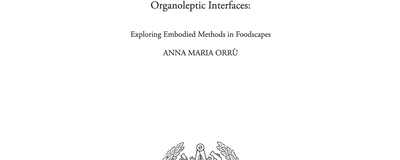Organoleptic Interfaces: Exploring Embodied Methods in Foodscapes

Abstract
In the move to re-acquaint urban green and in-between spaces as solely parks and open spaces, this research looks to the concept of emerging foodscapes to form a transformative behaviour with food in the city. Urban population growth, unstable food security, environmental consequences of industrial food production are all motives for concern, alongside individual awareness of food provisioning, seasonal availability and behaviour. As these challenges increase in complexity, alternate methods and processes are needed to formulate a symphony of relations to instigate action and agency from urban inhabitants that need to be put into dynamic constructs to revise behaviours and reframe patterns of thought. The research methodology embarks on artistic-based explorations into the role of corporeal thinking, situated knowledge, and sensorial relevance for studying the relation between body, food, and time within urban-making. In order to explore what spatial immersions could trigger behavioural shifts, the research approach has two sequential phases with three conceptual ingredients: embodiment, the senses and time in preparation for relating to the body as a mode of enquiring. Phase 1 deals with 2 types of critical cartography: bodily and digital staging diverse modes of movement and immersion from feet to mouth through two overland green safaris, an app interface survey, and a tracing of the memory through place. Phase 2 deals with a bodily choreography and ‘instruction’ to find deeper forms of visceral enquiry via Butoh dance and other conditions for making and staging fiction. Each phase is done under two constructed platforms for the investigations, Gröna Linjen in Stockholm and AHA Festival in Gothenburg, that endeavour to ‘amplify’ the everyday experience around food. All experiments generate different modes of relating to the environment to produce situated knowledge using key methodological models including imagineering and staging fiction, metaphor and performativity. Thereby they also open for further theoretical approaches. The findings from these dynamic corporeal assemblages is that in the process of embodiment, the invisible is made visible. In essence the body becomes a ‘connector’; between behaviour and space, everyday rhythms and ecology, and between humans and plants creating zones for meaning and deeper commitment.



